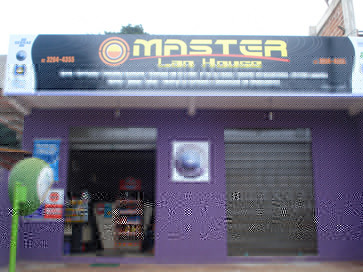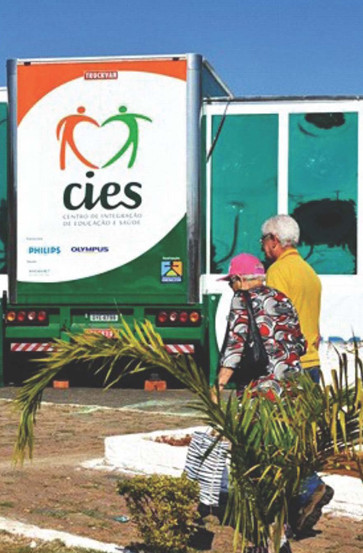As a European working in Brazil for three years, the country’s extreme contrasts continue to astound me. The World Bank ranks Brazil as the 13th most unequal country by GINI Coefficient, and more than 8 percent of Brazilians earn less than $1.50 per day—more than 15 million people. The results of the country’s 2010 census, released last month, reveal how such inequality translates into differences in living conditions. Eighty two percent of households in the industrial southeast have adequate sanitation, compared to just 20 percent in the north, home to the Amazon rainforest. Adult illiteracy is just under 10 percent nationally, but affects more than a quarter of small-city dwellers in the largely arid northeast. Brazil is the world’s second largest market for plastic surgery, and yet 75 percent of its people do not have health insurance.
In response, a new generation of businesses is emerging with the intention of improving the living conditions of low-income people, by offering appropriate products and services at accessible prices, or creating opportunities for participation in the value chain. Recent research mapped 140 small and medium enterprises of this kind across the country, and closer inspection using a sample of 50 businesses revealed that they focus on affecting the lowest income groups. The mapping, coordinated by the Brazil Chapter of the Aspen Network of Development Entrepreneurs (ANDE), together with AVINA Foundation and Potencia Ventures and executed by Plano CDE, showed that 60 percent of businesses focus on people with monthly household income of less than $170, and 72 percent on those between $170 and $680.
 A LAN house affiliated with CDI lan in Goiânia, Brazil. (Photo by Patricia Silva Sardeiro/CDI lan)
A LAN house affiliated with CDI lan in Goiânia, Brazil. (Photo by Patricia Silva Sardeiro/CDI lan)
One example is CDI lan, which distributes education and financial services to low-income communities through its network of 6,500 LAN (Local Area Network) houses across Brazil. LAN houses are like Internet cafés, usually with no more than 10 computers and often housed in garages, and it is here that 34 percent of Brazilians log on to the web to communicate with friends and family in distant cities, find information for their homework, or search job opportunities. Among CDI lan’s affiliated LAN houses, 77 percent of users come from households with monthly income below $1,300. CDI lan works with service providers to create customized products for these consumers and then trains the LAN houses to deliver them, with the resulting revenue shared among all three parties.
In some cases, businesses are plugging gaps in state provision of services. Despite government healthcare spending of around US$ 43 billion in 2010, many low-income people have difficulty accessing public health services because of lack of information, long waiting times, or prohibitive commutes to reach facilities. Flipping the traditional approach on its head, Projeto cies takes healthcare services to the patients through mobile clinics—essentially trucks kitted out with medical equipment and trained healthcare professionals. The for-profit company receives payment per intervention from the public healthcare fund. This enabled it to treat over 16,000 outpatients in 2010, earning more than $640,000 in revenue.
Are you enjoying this article? Read more like this, plus SSIR's full archive of content, when you subscribe.
Both CDI lan and Projeto cies are examples of another interesting conclusion revealed by the ANDE mapping: social enterprises comprise a very young field. In fact, more than half of the businesses studied began operations after 2004.
 Projeto cies' mobile clinics take health care services into low-income communities. (Photo courtesy of Projeto cies)
Projeto cies' mobile clinics take health care services into low-income communities. (Photo courtesy of Projeto cies)
This recent wave of new business initiatives focused on low-income consumers has created demand in the entrepreneurship ecosystem for specialized incubation and acceleration programs. One of the most innovative solutions to emerge is Artemisia’s Aceleradora de Impacto (Impact Accelerator). Launched this past fall, the nine-month program helps businesses become investment-ready by enabling entrepreneurs to evaluate and re-engineer the business model and providing them access to human capital and mentorship. The most promising businesses will receive seed funding, offered by Village Capital, a US-based organization with experience supporting startups in India and the United States, and VOX Capital, the first Brazilian venture capital fund focused on businesses that target the base of the pyramid.
The mapping project is just one initiative of ANDE’s Brazil Chapter, a network of pioneering organizations collaborating to build the Brazilian ecosystem for businesses that target low-income people. Attention will be increasingly focused on Brazil in the coming years as it hosts the Rio+20 Summit, the 2014 World Cup, and the 2016 Olympic Games. Under this spotlight, my hope is that Brazil will serve as an example to the developing world on how to eliminate the barriers to prosperity.
Support SSIR’s coverage of cross-sector solutions to global challenges.
Help us further the reach of innovative ideas. Donate today.
Read more stories by Rob Parkinson.

